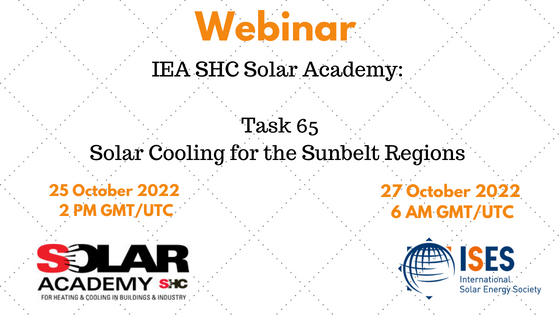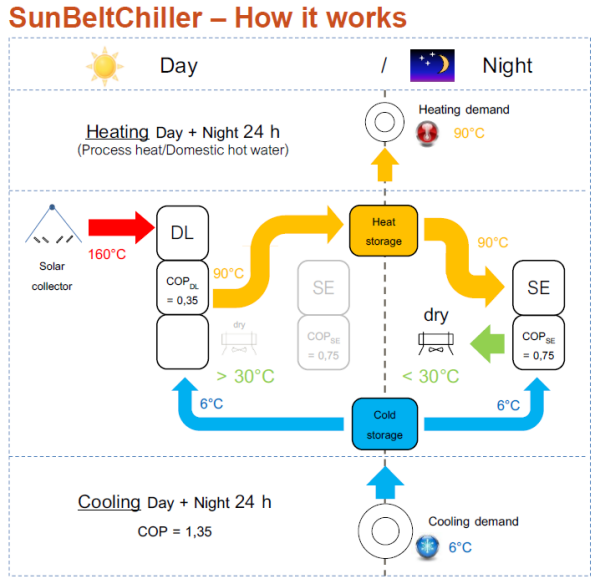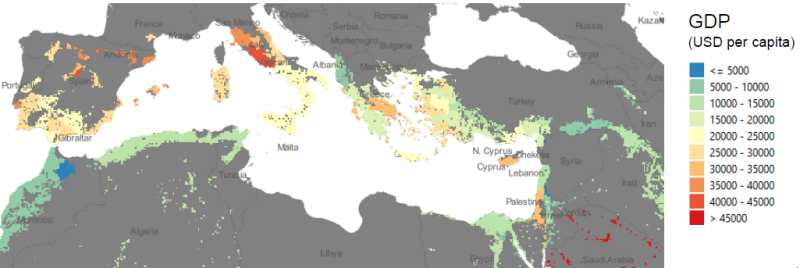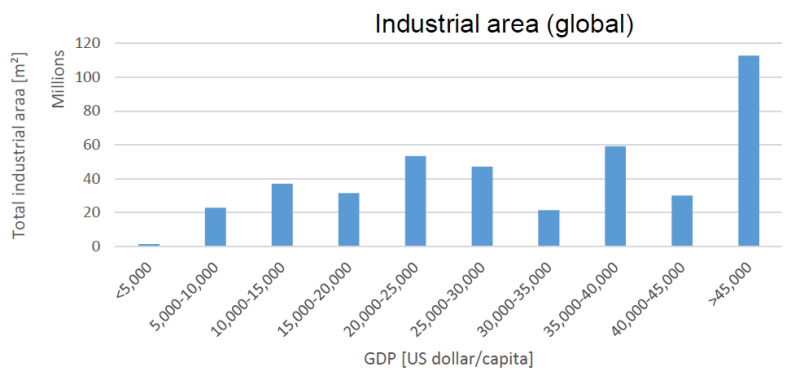Posted: October 19, 2022

Photo: ISES / Bärbel Epp
The energy demand for air-conditioning is growing faster than any other energy consumption in buildings. The main share of the projected growth for space cooling comes from emerging economies and will more than triple by 2050 to 6,000 TWh/a globally. What could be the contribution from PV and solar thermal cooling to meet this increasing demand in the next decade? This was the key question that Dr Uli Jakob, Head of IEA SHC Task 65 Solar Cooling for the Sunbelt Region elaborated in his keynote presentation “The Future of Solar Cooling” at Eurosun. A newly developed tool within the German project SunBeltChiller allows the assessment of solar cooling potentials based on specific geographical data on irradiation, population density, industrial areas and water availability. Task 65 offers a webinar on 25 and 27 October 2022, depending on your local time zone, which provides a deeper insight into the analysis of framework conditions and potentials for solar cooling systems based on geographical data. Register here..

SunBeltChiller concept
The challenge faced by many solar thermal cooling systems in the sunbelt region is the need for recooling the heat-transfer medium. In areas with high ambient temperatures above 30 °C wet cooling towers are necessary, which causes costs and water requirements. In the SunBeltChiller project the scientists have developed a new system configuration for a solar thermal cooling system that works without a wet recooler and can therefore be operated in dry and water-poor areas.
There are three special features of this concept, which is shown in figure 1:
- Double lift (DL): the use of concentrating collectors as the heat source of around 160 °C for a high-temperature heat pump.
- Single effect (SE): The waste heat from the double lift process at around 90 °C is stored and used in a single-effect absorption chiller during the night.
- Cooling storage connected to the single-effect chiller to make the cold produced at night available during the day.
“The big advantage of the SunBeltChiller concept is the fact that only the single-effect cooling process needs recooling. This is done at moderate temperatures during the night because of the storage, which allows the use of dry recoolers,” explains Richard Gurtner, Head of the SunBeltChiller project and researcher at the German ZAE Bayern research institute.

Figure 1: Concept of a SunBeltChiller system, which combines the double-lift (DL) operation of a high-temperature heat pump with a single-effect absorption chiller to avoid a wet recooler.
Source: ZAE Bayern
Gurtner and his team wanted to find out in which areas of the sunbelt region there is potential for this concept. They defined a DNI of at least 1,500 kWh/m2a as the necessary conditions for the concentrating collectors. They also wanted to seek dry and arid regions, where the dry cooling advantage of the SunBeltChiller concept has a unique advantage.

Figure 2: Potential customers for SunBeltChiller systems around the Mediterranean. The people live in areas with a DNI higher than 1,500 kWh/a and with water scarcity. The colours show the GDP, with green representing low income groups and red indicating well-off population groups.
Source: ZAE
ZAE used geographical information system software (QGIS). They also collected data from publicly available sources, such as climate zones, irradiation potential, gross domestic product, population density, industrial areas and water availability, and adapted it to a uniform grid structure. In the tool, the whole world is covered with a grid of one square kilometre fields. The tool can check the available data in all these squares and aggregate the results, if a set filter is met.
Two filters are crucial here. The level of GDP is an indication of the market volume for building air conditioning, because homeowners need a certain income to buy solar cooling systems. Industrial areas, on the other hand, are the indicator for the market size of industrial cooling demand. The result can then be displayed graphically (see figure 2) or as charts (figure 3).

Figure 3: Global potential for SunBeltChiller systems for industrial cooling. How to read this chart: The tool identified industrial areas totalling 110 million m2 across the globe where the GDP is above USD 45,000 (column on the right).
Photo: ZAE
Currently the QGIS tool is being used on a global level only. But Gurtner and his team want to identify potential demand for solar cooling systems in buildings and industry also at country level. “
“The QGIS-based software is a great tool to identify potential solar thermal cooling demand,” summarised Uli Jakob. “It is all about how to use the solar resource on site for particular applications.”
Organisations mentioned in this article: